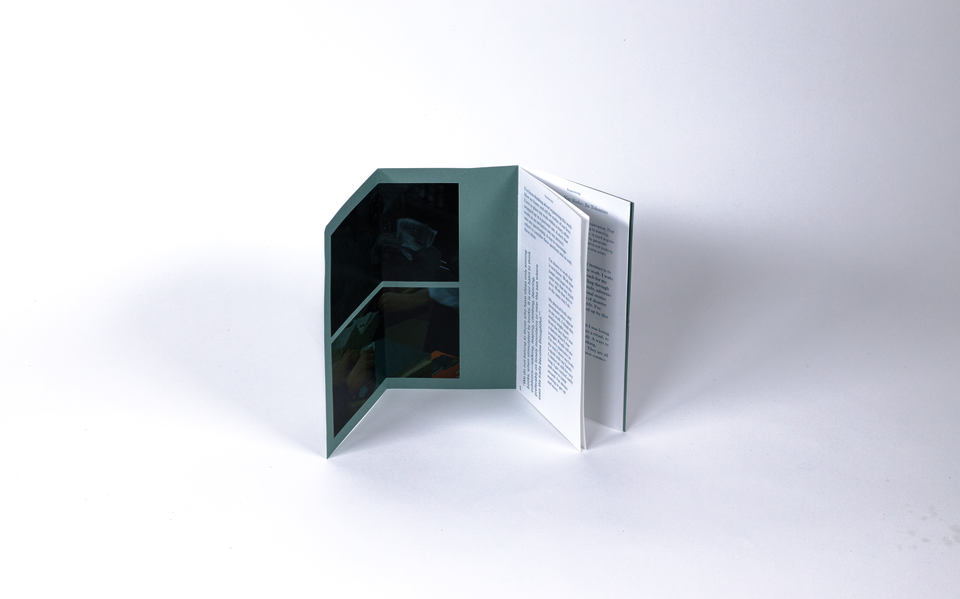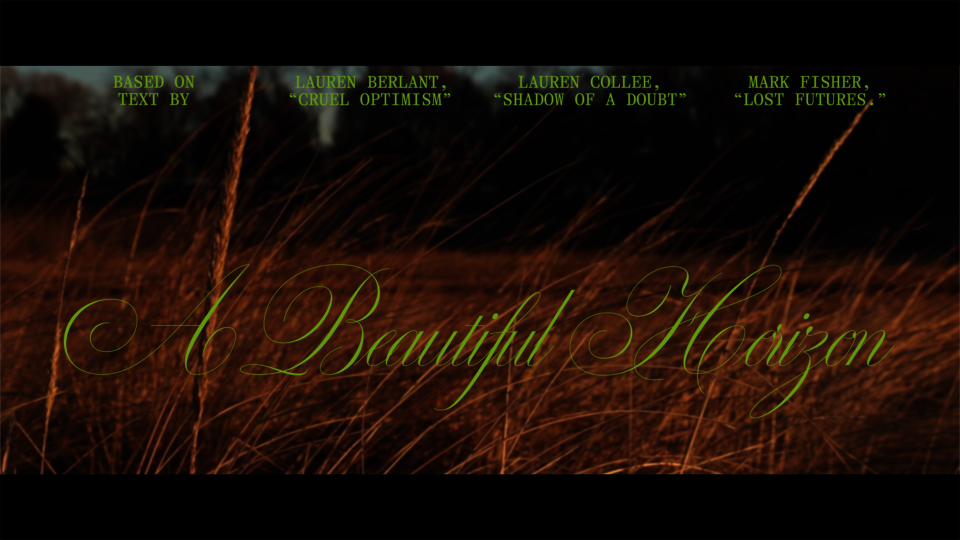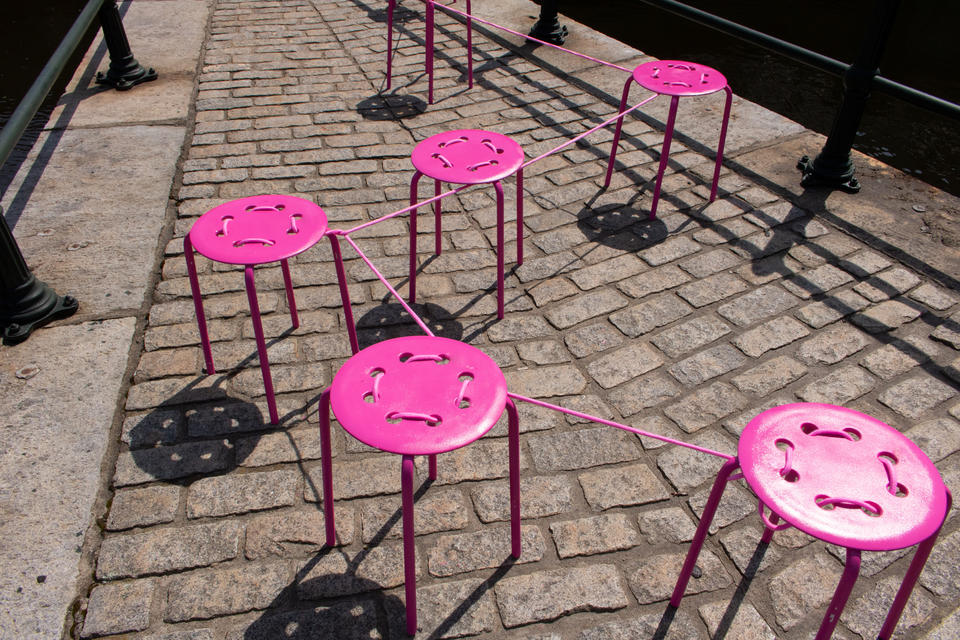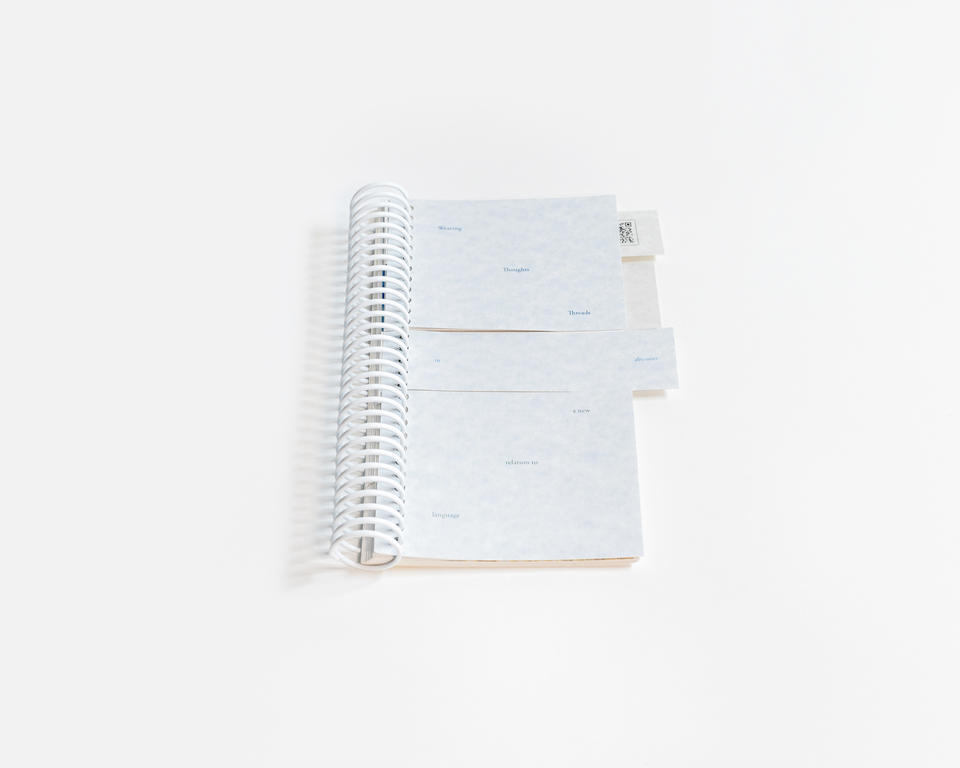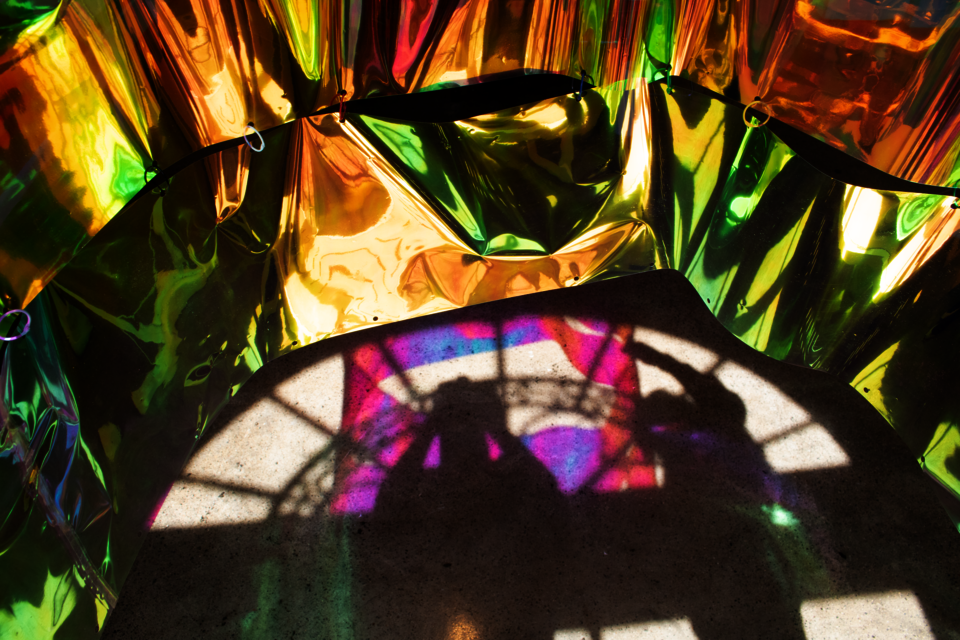Video file
Ásta Thrastardottir
Soft Ruptures; Slow Formations
Language shapes our understanding of identity, place, and self. As a graphic designer, I question the existing structures of language, while using it as a material to build new formations. Nudging against certainties, I challenge how the stories we are told can dispossess us, even flatten us.
My method is a constant attempt to peel back the layers and study what lingers below. When questions arise, I look to the ways in which visual artists and writers have seen through this surface. I observe, listen, and hold stories closely, passing them back and forth between my hands. Using annotation and metaphor, I expose new relations. Immaterial observations become immersive experiences.
Emerging forms become a testing ground for new stories. To deconstruct our inherited narratives, I invite gentle disruptions; a soft provocation to reshape our inner dialogues.
Useless Objects
Video
2021
Inspired by the Caps Lock chapter “The Worship of Products,” I wanted to do a deep dive into the strange objects we covet. I was thinking of the ways people articulate themselves through the things they own; how shopping becomes a way to present oneself. I made a short video exploring the idea of the infinite, mindless scroll, and our interactions with objects of display.
Image
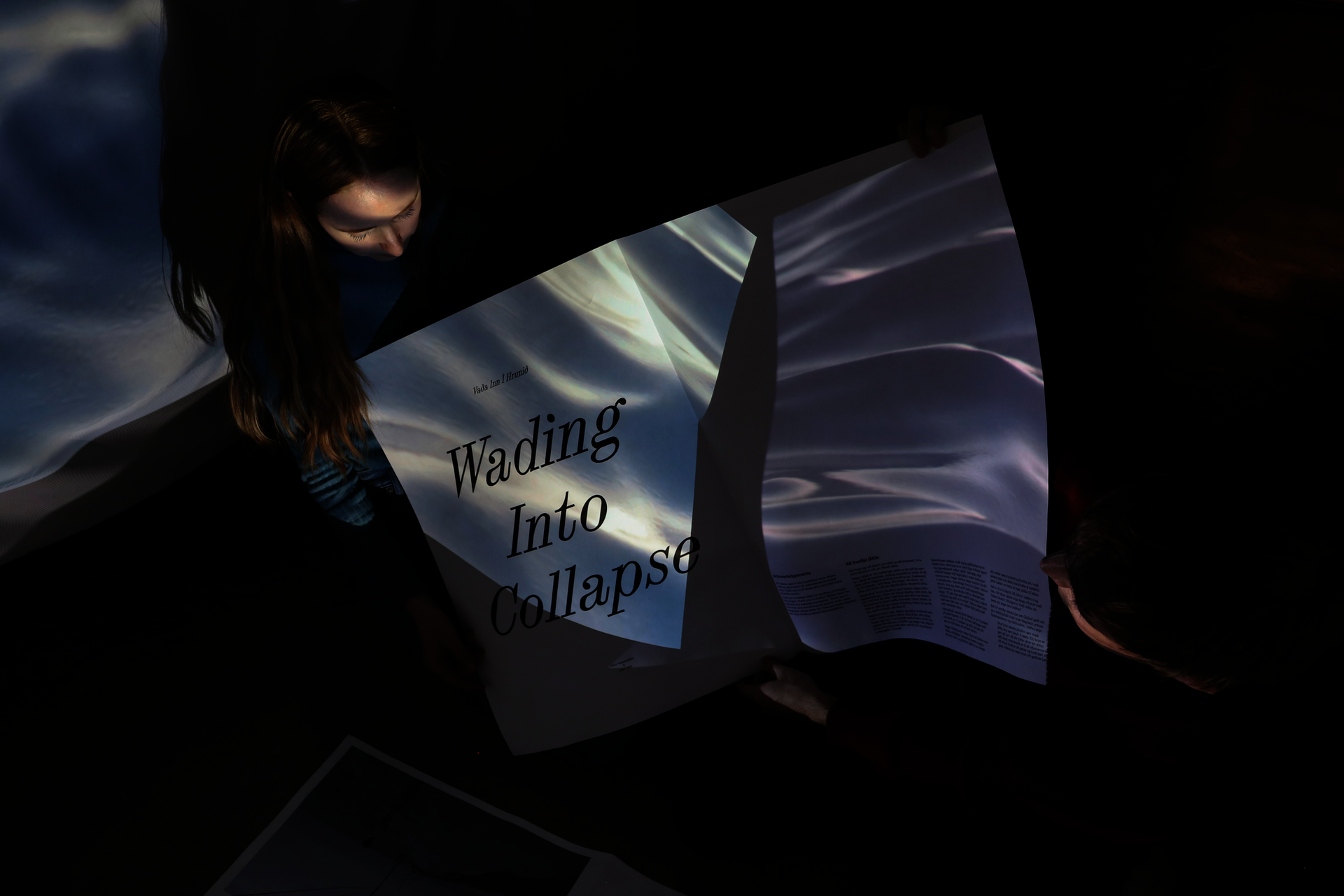
Wading Into Collapse
Publication, Installation, and Video
2022
A collaborative project with Jack Tufts. We created an installation to tell the stories of our homes, Iceland and Louisiana, to show the ways the climate is already dramatically shifting in each place. It is an intimate installation, meant for two people, that immerses those who sit into the space in videos that flash from Louisiana to Iceland. In the center is a book, so big that two people are meant to flip the pages together. The book includes our personal stories of how the climate shifting has impacted our families. The stories are written in English and Icelandic. When people think of climate change, they often imagine some sort of dystopian futuristic scene, or something that will only become serious in the year 2100. We find comfort in thinking of the immediate, planning out of lives in hours, days, weeks, and months. But our installation is not a story about a distant far-off future, it is a story about the past and present. We put our homes on display to show the ways in which the climate is already shifting in Iceland and Louisiana. To imagine what the world will look like in 78 years is intimidating, the image is so far in the future that it is blurred, too slippery to grasp. But ecological collapse doesn’t exist in sci-fi futures, it is happening now.
Eyjapæja (Island Girl)
Video
2020
In the Fall of 2020, I began working on a collaborative three-channel video and installation created with my sister Berglind Þrastardóttir. Using a combination of filmed footage and archival footage, this installation tells the story of the evacuation of Heimaey, as our mother relayed it to us. This volcanic eruption destroyed her childhood home and reshaped the island where she was raised. Presented as an abstracted story of family histories and shifting landscapes, this video juxtaposes present-day imagery of Berglind with archival footage of the evacuation. The present-day imagery was taken by my sister Berglind Þrastardóttir with help from Edda Rós. Berglind narrates the script and becomes a character in the resequenced composition. The Eldfell eruption was the most famous in Iceland and was documented extensively in the news. The footage and imagery became part of the public record. This record is combined with the impressions held in memory through my mother’s story. Each video has a different length. When the videos first play, the imagery is clearly laid out and sequenced in a deliberate way, but as the videos loop again and again, new sequencing occurs. Every time we tell a story, it changes ever so slightly. I was interested in studying what happens to memory as it is passed down from generation to generation. How language becomes residue.
Image
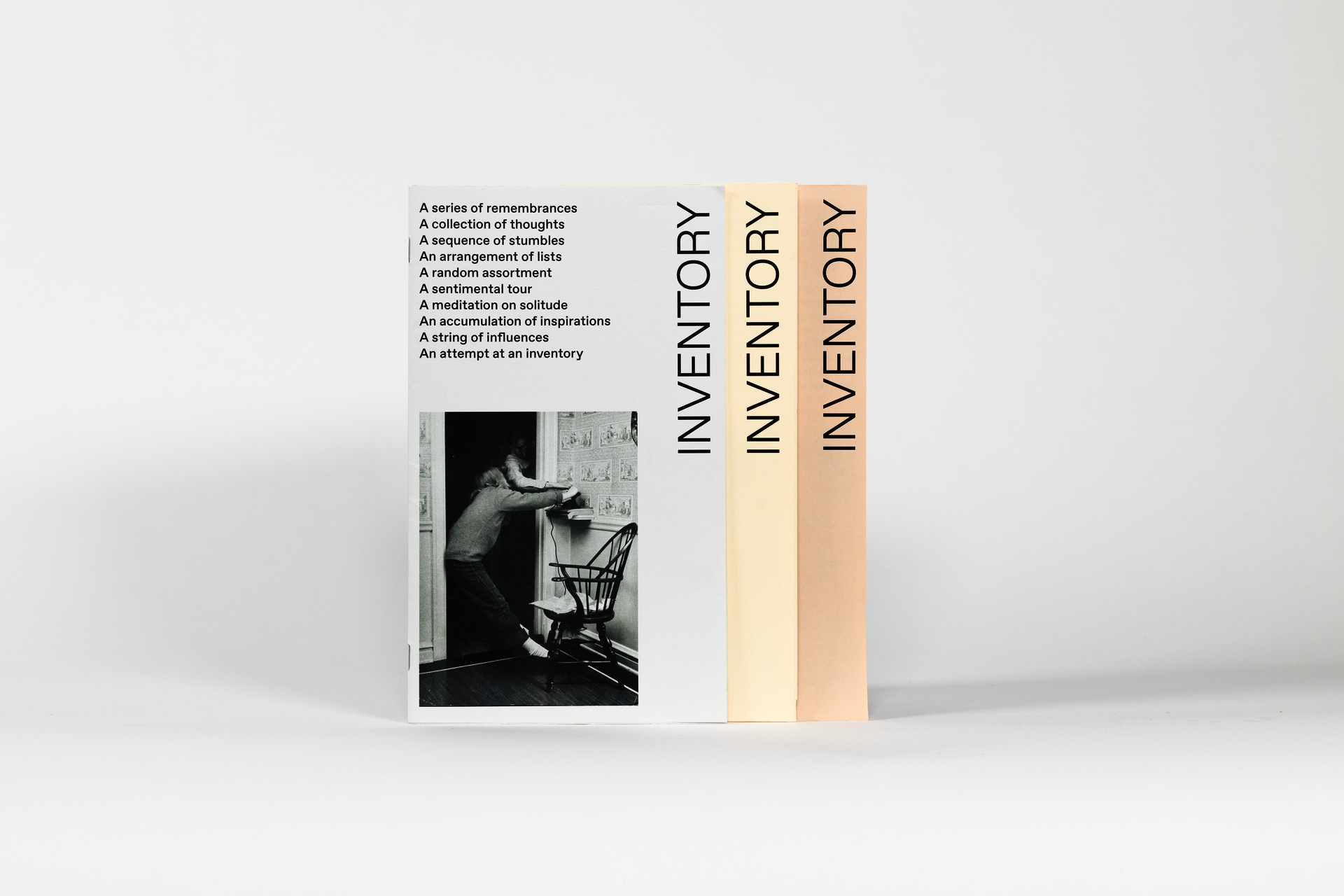
Inventory
Publication
2021
In the winter of 2021, I became interested in the idea of catalogs and collections. During the pandemic, we were often urged to document and catalog how our lives are being impacted, and I was interested in trying to catalog my own experiences with solitude. The project began on my meandering walks around Providence. As I walked through the city, alone, during the first winter of the pandemic, I began noting down my observations. I built a collection of fragmented thoughts and representations of the pandemic. Inventory, at its very basis, is a book of lists. It begins with, “I stumbled upon,” and then goes from there. I connect things in a very loose way, and it is about finding small connections between seemingly disjointed thoughts. It mixes my own writing with collected ephemera that interested me: quotes from Glenn Gould, notes from Lydia Davis, lists from Richard Serra. As it grew, it became more about the ways in which we adapt in times of drastic change.
Wash, Rinse, Repeat
Video
2021
A video project that became an interrogation into an existence. Through gesture, ritual, and abstraction, I was studying my own performance of femininity. The video itself became a performance, a performance of myself, a performance of my femininity as identity. It was meant to serve as an invitation, allowing others to be privy to this journey. The scenes are intimate, head on, and show only fragmentations of myself. This video was made with help from Dougal Henkel, director of photography.
- Architecture
- Ceramics
- Design Engineering
- Digital + Media
- Furniture Design
- Global Arts and Cultures
- Glass
- Graphic Design
- Industrial Design
- Interior Architecture
- Jewelry + Metalsmithing
- Landscape Architecture
- Nature-Culture-Sustainability Studies
- Painting
- Photography
- Printmaking
- Sculpture
- TLAD
- Textiles
Beginnings
